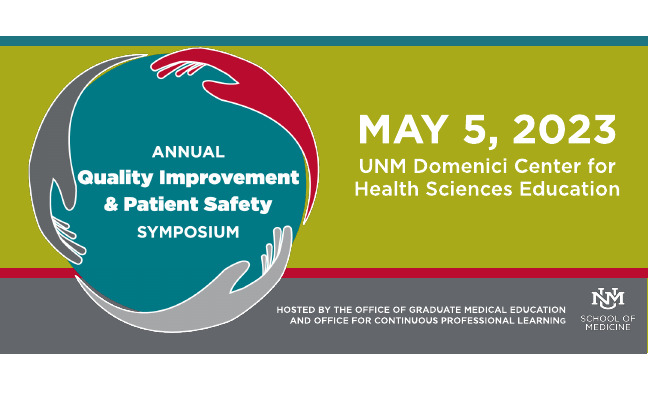Document Type
Poster
Publication Date
5-5-2023
Abstract
Gap Identification/Background
About 2.5 million Americans in acute care facilities develop a hospital-acquired pressure injury (HAPI) each year, with an incidence up to 45% in intensive care settings (ICUs)1 costing $75,000-$150,000 per patient2. They are painful, reduce quality of life, and increase morbidity and mortality, resulting in 60,000 deaths annually in the United States.2
Guideline recommendations are that HAPI prevention begins with a comprehensive risk assessment that is not dependent on a single risk tool since no single tool is comprehensive. However, a chart audit conducted in a 24-bed trauma-surgical intensive care unit (TSICU) of a 556-bed academic medical center revealed 100% reliance (n = 22 of 22) on the Braden Scale risk assessment tool (Braden). The audit also demonstrated poor documentation compliance with guideline-recommended HAPI prevention care1 with a baseline mean right care score (MRCS) of only eight of eleven HAPI prevention practices. This was a concerning finding given the institutional HAPI rate of 1.08 per 1000 discharges in Fall 20214, well above the national average of 0.62 for other large academic medical centers5.
Description of Intervention
The QI project consisted of four two-week Plan-Do-Study-Act (PDSA) cycles. The first intervention focused on increasing the identification of patients at high risk for HAPI, and the second intervention focused on prevention care provided by nurses. The risk assessment tool guided nurses to calculate a mean high-risk positivity rate (MHRPR) with the Braden plus six additional risk factors identified in the guideline1. It also contained a reminder checklist of eleven guideline-recommended nursing practices. The second intervention, an in-person audit tool of high-risk patients, determined high-risk patients’ MRCS by awarding one point for adherence to each of the eleven nursing practices.
Data/Measures of Change
Continuous collection of risk tool data occurred over eight weeks. Nurses scanned a QR code posted at each charting station and could complete a risk tool for each patient each shift. Additionally, in-person audits of high-risk patients occurred three days per week to record MRCS. A secure web application (REDCap) initially captured the tool and audit data. Each core intervention included one process and outcome measure. Process measures tracked the utilization of the risk and audit tools. Outcome measures (MHRPR and MRCS) evaluated the small tests of change implemented over eight weeks. Data plotting of the average of the two outcome measures (aim measure) was used to measure the project's overall success. A balancing measure of nursing stress toward HAPI prevention ensured that the project did not negatively impact nurses.
Results
In total, 171 nursing risk tools and 299 audits revealed that the core interventions did improve patient safety with a pressure injury prevention bundle by 25% in eight weeks. The aim measure increased from 19 to 25 and was attributable to the increased identification of high-risk HAPI patients. The MRCS achieved a statistically significant shift of five points above the median during PDSA Cycles 2 and 3, demonstrating transient improvement in patient safety that was unfortunately not sustained (Figure 1).
Over eight weeks, the risk assessment tool utilization rate was 14% (n = 171 of 1264). The tool demonstrated greater sensitivity for detecting high-risk patients, with 43% (n = 74 of 171) of patients as high-risk for HAPI per the new tool compared to 19% (n = 32 of 171) of those screened with the Braden alone.
The visual audits of nursing prevention care for high-risk patients improved significantly during PDSA Cycles 2 and 3, but the improvement was unfortunately not sustained.
Pre- and post-intervention nursing surveys were sent to approximately 80 nurses, with a low response rate. In the initial nursing survey, Before the project, 31.8% (n = 7 of 22) agreed that the Braden tool included all criteria needed to predict HAPI risk, improving to 20% (n = 3 of 15) after the project, indicating increased knowledge of non-Braden risk factors. Another positive finding was that before the project, 16.7% (n = 2 of 12) felt that too much attention was given to preventing HAPIs which improved to 6.7% (n = 1 of 15) after the project, indicating improved appreciation for high-stakes HAPI prevention work. A composite of nursing stress levels toward HAPI prevention did not shift from a baseline of five, indicating that the interventions did not cause the nurses more stress than usual. In summary, the bundle did improve patient safety by 25% in eight weeks due to the increased sensitivity of the risk assessment tool, but further improvement is needed to improve nursing adherence to HAPI prevention.
References
- European Pressure Ulcer Advisory Panel, National Pressure Injury Advisory Panel, & Pan Pacific Pressure Injury Alliance. (2019). Prevention and treatment of pressure ulcers/injuries: Clinical practice guideline (Third). European Pressure Ulcer Advisory Panel.
- National Pressure Injury Advisory Panel. (2021). 2021 fact sheet: About pressure injuries in US healthcare. chrome-extension://efaidnbmnnnibpcajpcglclefindmkaj/https://cdn.ymaws.com/npiap.com/resource/resmgr/public_policy_files/npiap_word_fact_sheet_08mar2.pdf
- The Joint Commission. (2022, March). Quick safety 25: Preventing pressure injuries. https://www.jointcommission.org/resources/news-and-multimedia/newsletters/newsletters/quick-safety/quick-safety-issue-25-preventing-pressure-injuries/#.ZE1pzXbMKUl
- The Leapfrog Group. (2021, November). University of New Mexico Hospital dangerous bed sores. https://www.hospitalsafetygrade.org/h/university-of-new-mexico-hospital?findBy=zip&zip_code=87106&radius=50&rPos=300&rSort=distance
- Agency for Healthcare Research and Quality. (2021, July). Patient safety indicators (PSI) benchmark data tables v2021. https://qualityindicators.ahrq.gov/Downloads/Modules/PSI/V2021/Version_2021_Benchmark_Tables_PSI.pdf
Recommended Citation
Denmark, Radha; Cassie Belzer; and Christopher Bartlett. "Improving Patient Safety With a Pressure Injury Prevention Bundle in a Urban Intensive Care Unit." (2023). https://digitalrepository.unm.edu/hsc_qips/75


Comments
Poster Presented at UNM Health Sciences Center Quality Improvement & Patient Safety Symposium 2023